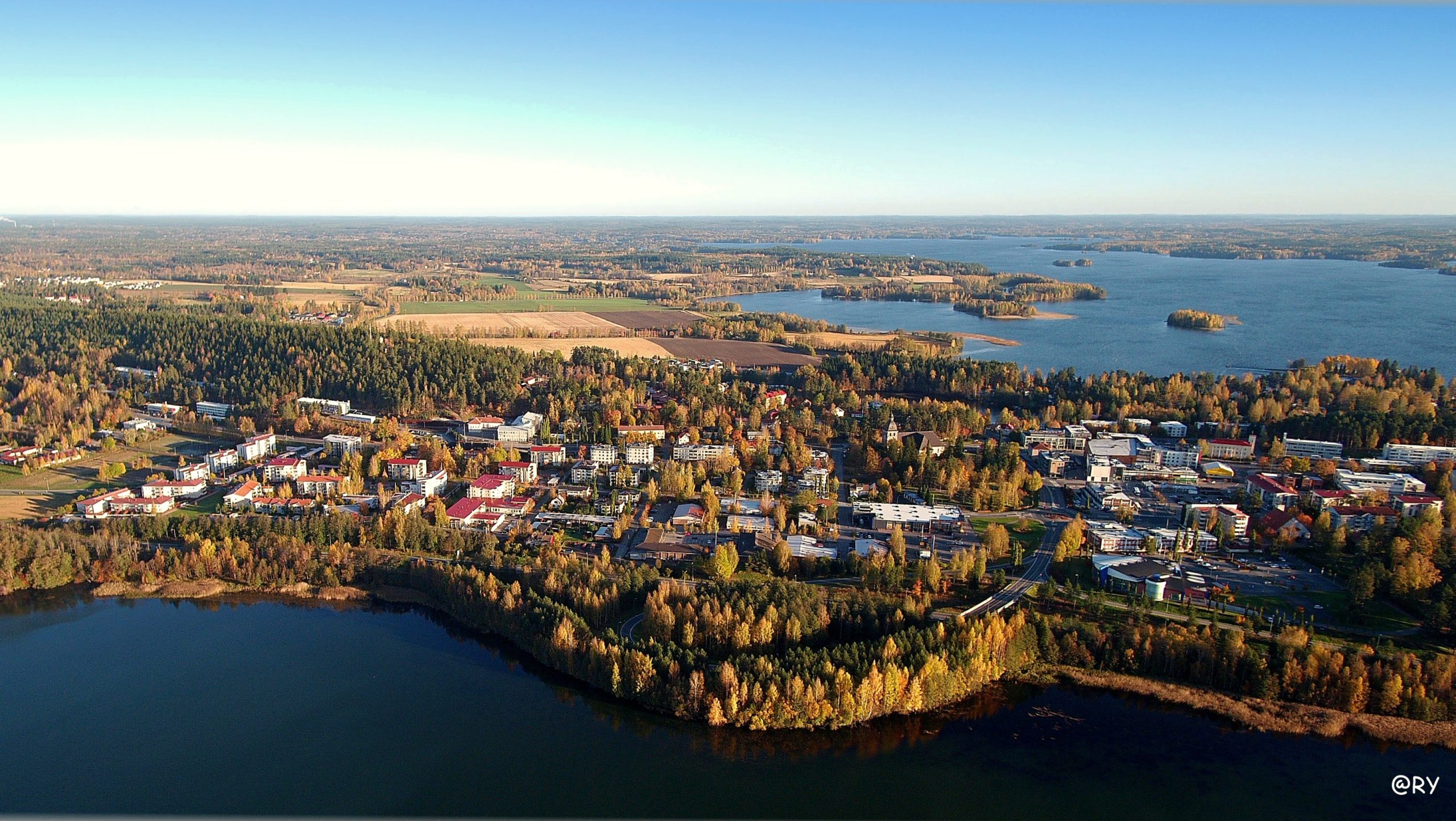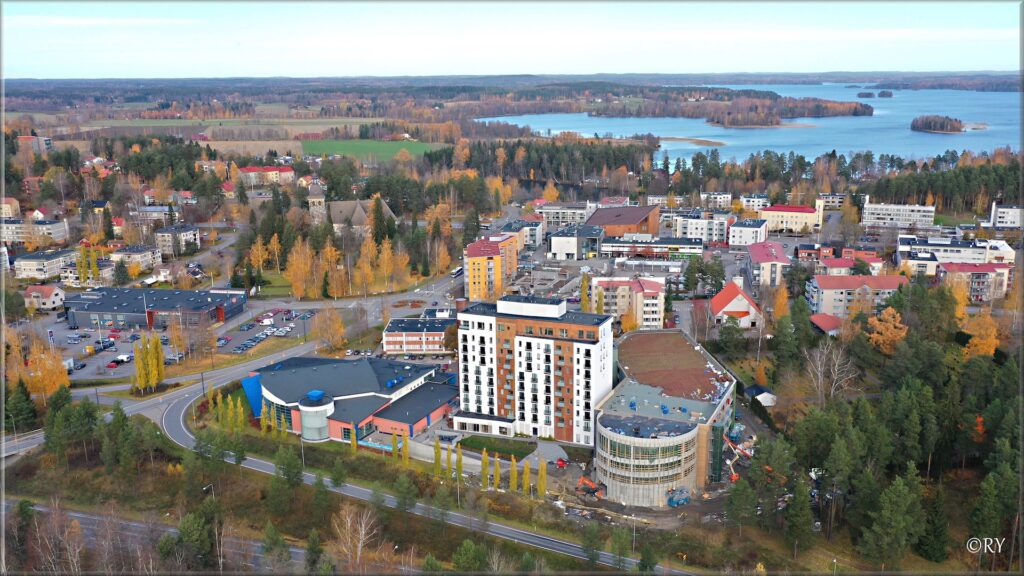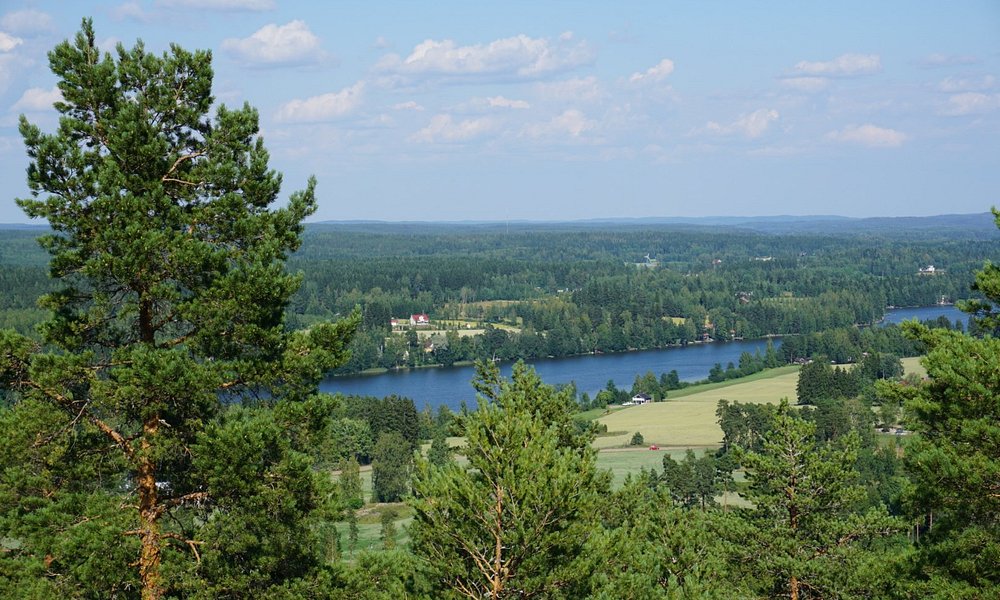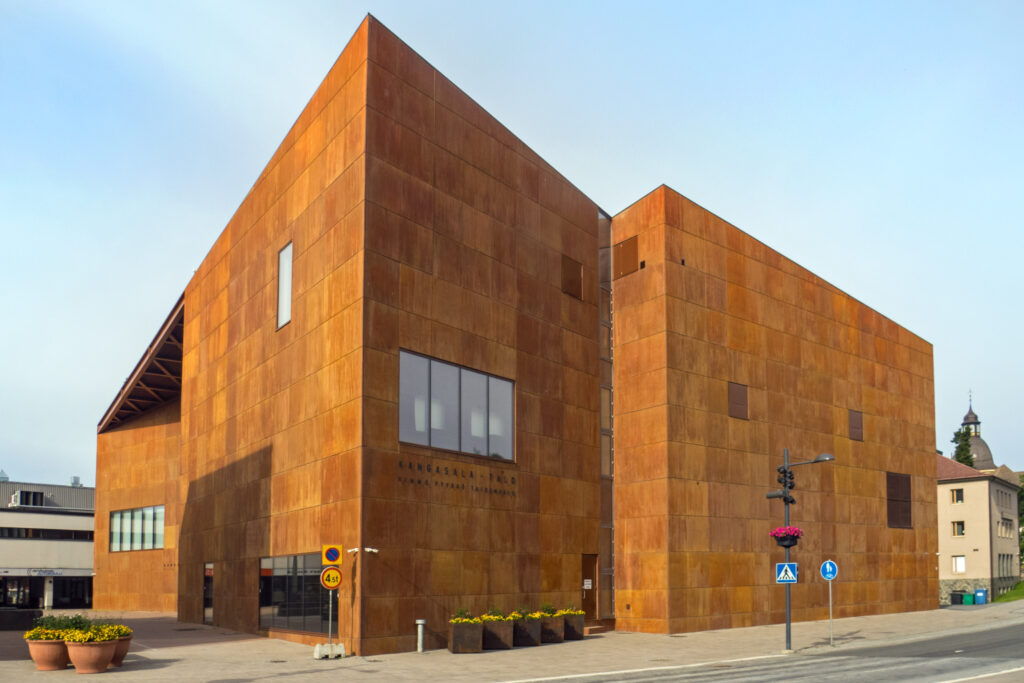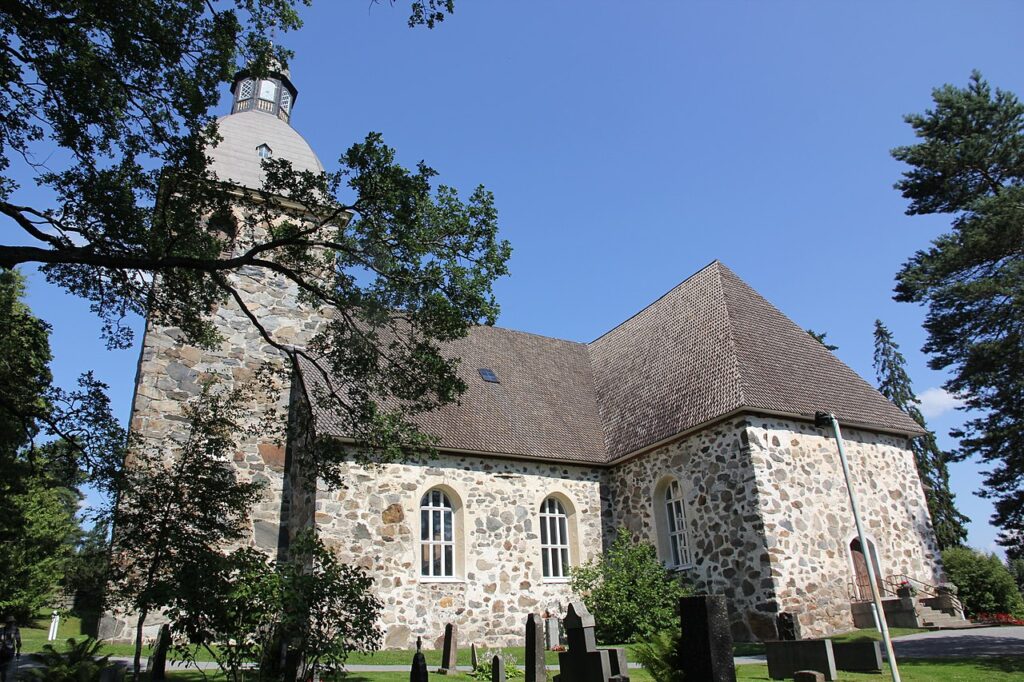It is known in Finland for the beauty of its natural environment, as described by Zacharias Topelius in his poem “A Summer’s Day in Kangasala”
Kangasala is a city in Finland, 16 kilometers east of Tampere. It was founded in 1865.
It is also known for its mansions, such as Liuksiala, where the Swedish queen Karin Månsdotter lived as widow, and Wääksy. Kangasala has a long history of tourism.
The lakes Roine, Längelmävesi and Vesijärvi are located in Kangasala. They are mentioned in the poem by Topelius, and Vesijärvi is the lake where the scenic view described in the lyrics is situated.
Culture
The Kangasala House , which was completed in autumn 2014 in the center of Kangasala, has a cultural center, which opened an art museum in January 2015, and also has a space for changing exhibitions and a multi-purpose hall.
A local newspaper called Kangasalan Sanomat is published in Kangasala , which has been published since December 1918. Today, Sydän-Hämeen Lehti also spreads somewhat in the area .
Attractions
Kangasala has been a popular tourist destination since the early 19th century. Observation towers have been built on the most important ridges in Kangasala : the observation towers of Haralanharju , Keisarinharju , Kirkkoharju and Vehoniemenharju . The lands on Emperor Harju have been admired by Gustav III in 1775 and Emperor Alexander I in 1819. Due to the emperor’s visit, Harju got its current name. Previously, Keisarinharju was known as Syrjänkorkee. The first observation tower was built there as early as 1881. In 2004, Keisarinharju was chosen by Yle Tampere and Pirkanmaathe most beautiful place in Pirkanmaa. The Kangasala rest home has served as a boarding house in the early 20th century, where many celebrities have spent their holidays.
Today, there are only three observation towers left after the arson: Vehoniemenharju, Kirkkoharju and the rebuilt Haralanharju. The Keisarinharju observation tower burned down in August 2006 and the recently renovated Haralanharju observation tower in January 2007. The Kirkkoharju observation tower also fell victim to an incineration company. Of the destroyed towers, the Haralanharju observation tower was rebuilt.
Kangasala has two car museums: Mobilia and Vehoniemi Car Museum . The church also has a small local history museum in a granary built in the 1830s.
Events
Every year since 2001, Kangasala has hosted smaller music festivals called ” Harjufestarit “, where Technicolor , Bloodpit and The Rasmus have performed . Recurring events include the Kangasala Organ Tradition Days (since 1994), the Kangasala Salon Music and the Hupilainen Puppet Theater International Puppet Theater Days . During the summer, the nationally acclaimed amateur theater association Ramppi Theater offers experiences . SahalahtiThe traditional summer event in the area is the Sahalahti Summer Days, which start on the Sunday after Midsummer. Literary culture is cherished by Kirjakahvila ( Summer Day Cultural Association ) and Sahalahti Book Friends . There are Discovery Days for children and families in early July.
Religion
According to the 2018 regional division, Kangasala has the following congregations of the Evangelical Lutheran Church of Finland:
- Kangasala Parish
- Kuhmalahti Chapel Parish
- Sahalahti parish area
The Kangasala Evangelical Lutheran Church has about 23,000 members. On 31 May 2016, the Sahalahti Chapel Parish was abolished, Sahalahti is called the parish area.
Built in 1767 in Kangasala, the handsome greystone stone church with its beautiful starry roofs and legendary bloodstones is located in the middle of the church village.
There is a Pentecostal church in Kangasala with a church in the center of Kangasala.
Of the parishes of the Finnish Orthodox Church, the Tampere Orthodox Parish operates in the Kangasala area .
Former churches
The following list mentions the parishes that were abolished in historical time in the present area of the city of Kangasala.
- Kuhmalahti Parish (attached to Kangasala Parish 2005)
- Sahalahti Parish (attached to Kangasala Parish 2005)
Sports
The largest sports club in the municipality has been the Kangasala Competition since 1930 . Fabrics include the following sports. Local sports clubs mentioned after the sports:
- volleyball – LP Kangasala plays in the women’s volleyball main series
- navigation – Kangasala SK
- kayaking – Kangasalan Paddlers
- speed skating and longball – Kangasala Victory
- football – FC Kangasala (Kangasala Victory and Kangasala Competition fusion club)
- hockey – Kisa-Eagles and Kangasala Victory
- Kangasala Athletes 1968 – TUL general club
- swimming – Swimming club Kangasalan Kuohu , FAQ
Kangasala has its own karting track , located in Lentola. Kangasala Ice Rink is located next to Pikkola School. In 2009, the Swimming Hall Kuohu was completed in Kangasala, which also houses, among other things, a gym, a pedicure hall, a café and meeting facilities.
Food culture
In the 1980s, alatope , rosol , cottage cheese , smoked vermicelli and homemade beer were named Kangasala’s main dishes .
Nature
Admiring the Kangasala lake and ridge landscape from the Kirkkoharju lookout tower.
Kangasala Kirkkoharju , Kuohunharju , Keisarinharju and Vehoniemenharju are in line with Pispalanharju and Pyynikinharju in Tampere . Haralanharju is located further north on the western side of Lake Vesijärvi.
About a quarter of the area of the city of Kangasala is water and there are another hundred lakes and ponds in the Kangasala area. The landscapes of Kangasala consist of lakes on the sides of the ridges. The three largest lakes in Kangasala are Vesijärvi , Längelmävesi and Roine . Lake Vesijärvi flows into the southern part of Längelmävesi. From Längelmävesi, water flows through the Kaivanto canal to Roine and from there on to Mallasvete and Vanajavesi . Other significant lakes are Heposelkä , Kirkkojärvi in the center, Kirkkojärvi in the Sahalahti area , Keljonjärvi , Pakkalanjärviand Kaukajärvi , Paalijärvi and Pälkänevesi , which are partly located on the Kangasala side .
The ridge section across the fabric divides the city into two fairly distinct halves. In the southern part of the city, the terrain is fairly flat, and most of the city’s fields are located on the shores of the dominant Roine. In the northern part, the height differences are larger, and there are several rather high hills around Lake Vesijärvi and east of Längelmävesi, including Valkeavuori near Heponiemi (178 m above sea level) and Sahalahti’s Kaakonvuori (180 m above sea level). The base between Vesijärvi and Längelmävesi is Mäkinen throughout and several bays of the lakes penetrate deep into it.
